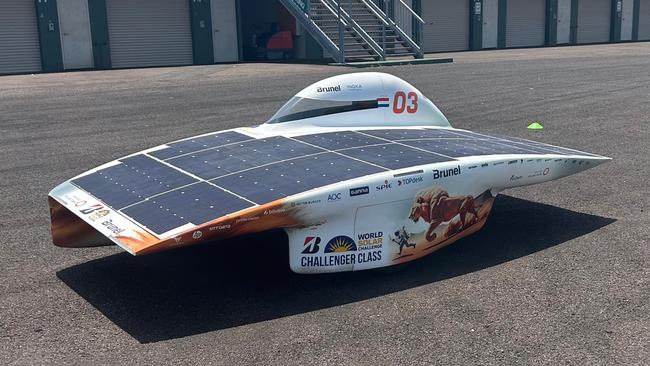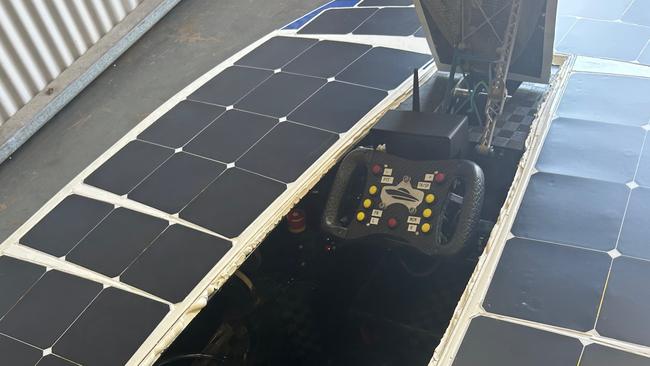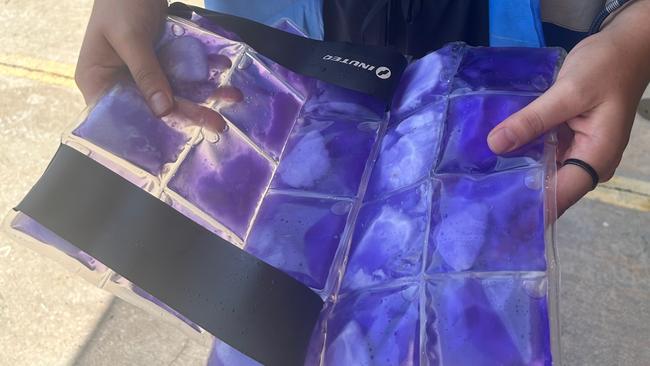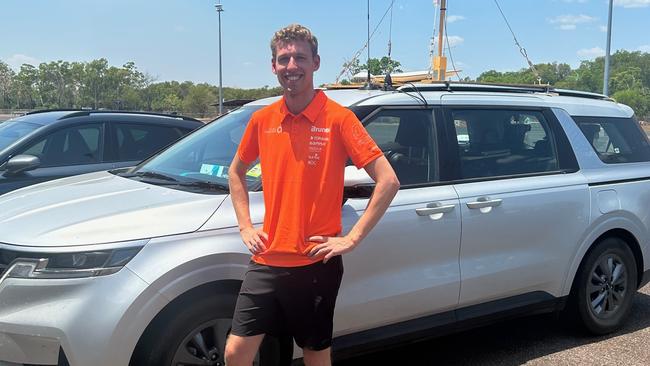Solar-powered cars race from Darwin to Adelaide
The most brilliant minds in solar-powered technology will come together in the Top End and race their self-built cars through the desert in a 3000km journey from Darwin to Adelaide.

News
Don't miss out on the headlines from News. Followed categories will be added to My News.
Jef Suy drives without shoes.
The car he is driving (or “pilots”) operates entirely on solar energy and is the top contender for this year’s Bridgestone World Solar Challenge.
The countdown has begun for the 3000km car race from Darwin to Adelaide that has students from all over the world compete against each other in solar-powered vehicles “designed, engineered and built with their own hands”.
From October 22 to 29 teams will traverse some of the harshest terrains as they race across the country, departing in the morning and travelling as far as they can until 5pm, before setting up camp wherever they find themselves.


This year Dutch team ‘Brunel’ and Belgian team ‘Innoptus’ have arrived early to spend the next 25 days getting themselves and their self-built cars acclimatised to Darwin’s heat.
The relentless Territory sun is optimal fuel for the solar-powered vehicles and although the cars can travel up to 900km without needing to be recharged, the drivers tend to overheat before the cars do.
Built to conserve as much energy as possible, airconditioning would be considered a waste.
The tiny area designated for the “pilot” of the vehicle is minimal.


Belgian team pilot Mr Suy does away with shoes and wears a PCM – a phase change cooling vest – to help regulate his body temperature for the three hours he spends driving before switching pilots.
The teams have about three pilots they rotate through.


The solar-powered vehicle is followed by a “chase car” that comes up with strategies for the race in real time, communicating to the pilot via walkie-talkie, much like in Formula 1.
Civil engineering student Thijs Kaalberg from the Dutch team was drawn to the Bridgestone Challenge because of his belief in the importance of sustainability.
“I think in 20 years, everyone will drive a solar-panelled car,” he said.
“We’re building towards it.”




